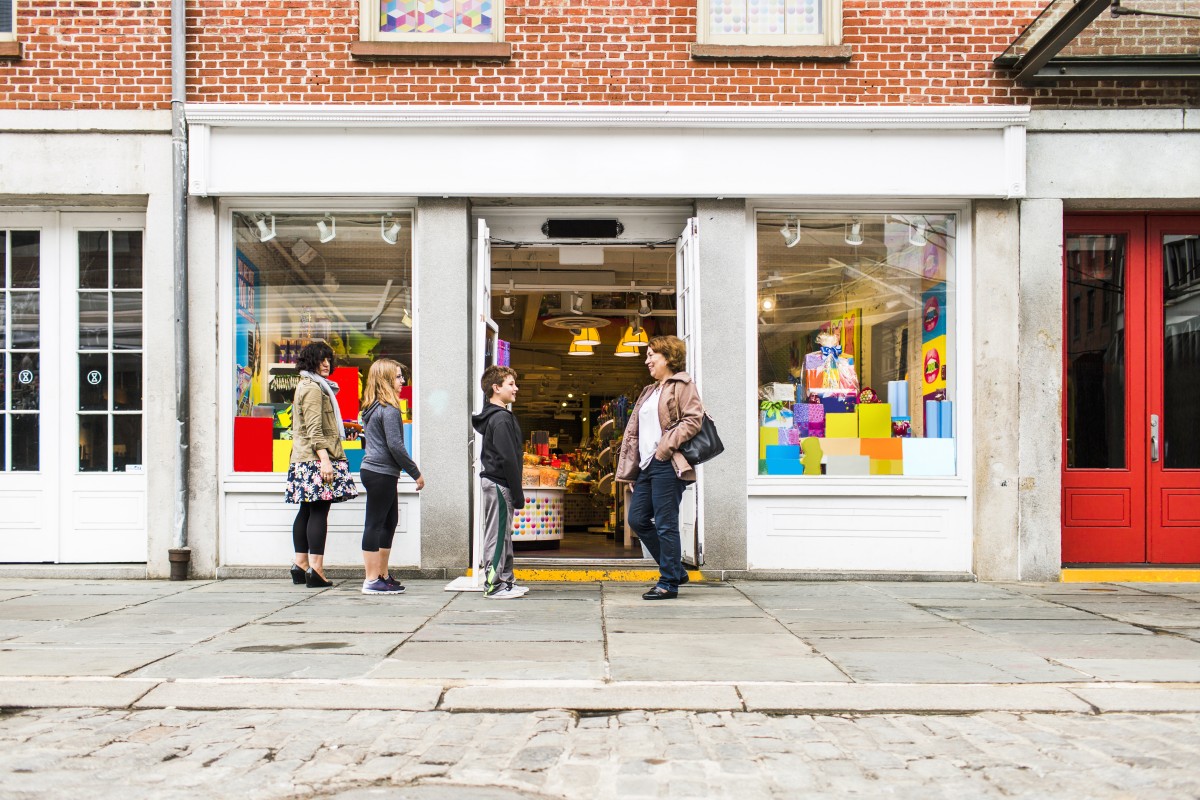The Era of the Online Shop
02 Apr 2024
Whenever I visit a new town or village, I like to take a stroll around and look at the shops. I suppose most people do. But what interests me isn’t just the discovery of a boutique or specialty shop aligning with an interest or two. I’m also interested in the make-up of the high street. Without sounding like my grandparents, it used to be that the shop streets were inundated with small shops selling one or other specialty items which are now sold with free delivery by Amazon. More often than not, I’ll find a surplus of hair stylists, nail bars, pizza takeaways, coffee shops and taxi ranks. In other words, those categories of shop which can’t be supplied by Amazon. It seems like this revolution in shopping happened by stealth. After perusing strange items for what seems like hours on end, we impulse-buy a knick-knack or time-saving item, feeling like we had discovered treasure in Aladdin’s cave. Jeff Bezos and his ubiquitous shopping experience might be the kings of up-selling, prompting messages such as “people who bought this, also bought that”, but it’s not the same.
But it’s not all the fault of Mr. Bezos. Some friends of mine, with a successful online shop, decided to open a “bricks and mortar” shop to sell their wares. I don’t need to tell you, it didn’t end well. In order to open a shop on the so-called high street, you obviously need a premises. Said rental premises comes with a landlord, and commercial rates. Add in electricity, insurance, and staff costs. That’s not counting refit costs or stock. The problem with these expenses is that apart from the last one, the rest are all fixed costs. January 1st and you’re on the hook for rent, rates, and everything else. Throughout the year, you’re trading through peaks and troughs, and if you’re lucky, your bank balance tips into the black some time around September, and stays there until the end of the year. Maybe some years it swings to positive in August, maybe some others, you don’t break even until November.
Putting this another way, you spend around three quarters of the year working for everyone else, and earning money for yourself in the latter months. I recently finished the book Profit First by Mike Michalowicz. It’s an interesting idea. You tuck away a certain percentage of your top-line revenue on day one. According to Mike, you start this at one percent (1%) of gross revenue with a view to increasing this as time goes on. He suggests using different bank accounts and transferring the profit immediately, rather than using accounting tricks. In other words, “ring fence” the income. Keep it away from the temptation to using it to pay for additional stock or pre-paying insurance.
This kind of a strategy flies in the face of the typical tech-startup fascination with “grow fast, profit later”. However, that strategy ties heavily into the framework of network effects. I’ll cover that interesting phenomenon in another blog post. For now, suffice it to say that if you have an online shop, network effects won’t do a lot for you. (Well, that’s not entirely true, but you’d have to read my other blog post for when network effects can be useful).
The true beauty of an online shop is that it relieves you of a lot of the fixed-cost burdens. If you’re very successful, you might need a premises or warehouse to manage inventory and shipping, but that’s a nice problem to have. Starting out, you can operate from the garden shed, if you want. Rent and rates are for your competitors! The main down side is that you don’t have the so-called footfall of a shop on the high street. On the plus side, you exchange the physical footfall of people in your locality for the billions of people who use the Internet every day. We might believe that “if we build it, they will come,” but the reality is quite different. There are close to two billion (yes, billion) websites on the Internet. What are the chances that prospective customers are going to find yours? While high street footfall is declining as people switch to online shopping, that doesn’t mean they’re going to land on your virtual doorstep. There are many methods for increasing traffic to your online shop, and over the next few weeks and months, I’d like to address a few of them.
Overall though, the future continues to look bleak for the high street and notwithstanding the challenges of creating and operating an online shop, increasingly it’s where your customers are.